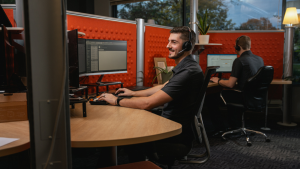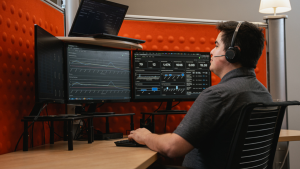Very few employees can honestly say they spend the entirety of their workday actually working. Whether it’s the 15 minutes you spend making your coffee in the morning or the 10 minutes catching up on Facebook after lunch, the occasional work break is inevitable.
A recent study showed that the average worker admits they waste three hours per eight-hour workday, not including lunch and scheduled break-time. However, a different study stated that workers only spent about 35 minutes, per day, not working.
While concluding the exact amount of time workers waste during their workday might be difficult, (because no one wants to admit they are looking for deals on patio furniture rather than writing that blog they were assigned), we can all say we have been guilty of frittering away some precious time during our workdays.
Here are the top four ways employees are using their time at work and a few ideas on how to be more productive during your workday.
#1: Emails
Emailing has become the top form of communication in the workplace. What’s the first thing most of us do when we come into work? Check our emails. Technological advances in the way we communicate have brought about the notion of having to be connected at all times. Our clients, and even our colleagues, tend to expect instant responses to each and every message, even when we are sick or on vacation. While email can be extremely beneficial, a lot of our workday is spent reading and answering emails. Many professionals have actually found they can get much more done during their workday if they don’t respond immediately to every single email.
Solution: Try not to check your email first thing in the mornings. Instead, spend anywhere from 30 minutes to an hour working on something more important first thing in the morning. This allows you to fully concentrate on what you have to do without any of those unread emails distracting or stressing you. You can also increase productivity by simply turning off your email notifications for short periods of time during the course of your day. It could be 15 minutes, or it could be 60 minutes, but you’ll realize that during that distraction-less time you’ll be able to blast through your to-do list.
#2: Online Distractions
The Internet is known for luring employees deeper and deeper into its web (no pun intended) with each and every click. It is said that 60% of online purchases are made during regular work hours and 65% of YouTube viewers watch between 9am – 5pm on weekdays while (presumably) at work. Social media outlets such as YouTube and Facebook and other forms of social media can be a great platform for brand awareness and business growth, while also becoming a distraction during the day.
Solution: Self-regulate. If you just absolutely can’t keep yourself from refreshing your Facebook feed every 10 minutes, simply block it. StayFocusd is an extension Google Chrome offers that allows you to set a certain amount of time you’re allowed to visit any website of your choice. Once that time is up, it denies further access to these sites. Take the first half of your lunch break to feed yourself and use the second half to completely indulge and get your daily fix of online distractions without using your productivity time.
#3: Colleagues
Nobody enjoys spending their entire workday in silence. Humans are social creatures by nature. We all appreciate a little chat here and there during our workday. For that reason, co-workers can be awesome, but they can also be a major distraction.
Solution: Headphones! Wear headphones while you work, at least while you’re concentrating on a project. Even if you aren’t listening to anything, having both of your headphones in will signal to your colleagues that you’re focused and in the zone. I understand some of us have very persistent co-workers who may still decide to come on over to your desk and give you a quick tap on the shoulder. At that point, simply tell them you are glad they came by and that you’re in a good workflow right now.
#4: Meetings
Meetings are necessary in most companies. 47% of professionals say their biggest time waster is having to attend too many meetings. On average, 33 minutes a day are spent just trying to schedule these meetings. While communication in the workplace is extremely important, there are better ways of communicating information that doesn’t involve attending meetings every other hour.
Solution: Next time you’re invited to a meeting that you believe might be irrelevant for you, ask the host why they think your presence is needed. You can also make the suggestion that a meeting be handled via email or through your project management software. Using this strategy can at least start a project in the right direction without bogging down everyone’s time.
Culture Matters
There lots of distractions in the workplace, but the company morale at the end of the day is what matters most. If the work is getting done, there is no need to create an overly strict workplace. Keeping your team engaged and excited to chat with one another grows a place where people want to work and are happy to spend most of their days. Check out our culture series here to learn more about creating a place where people want to work!






